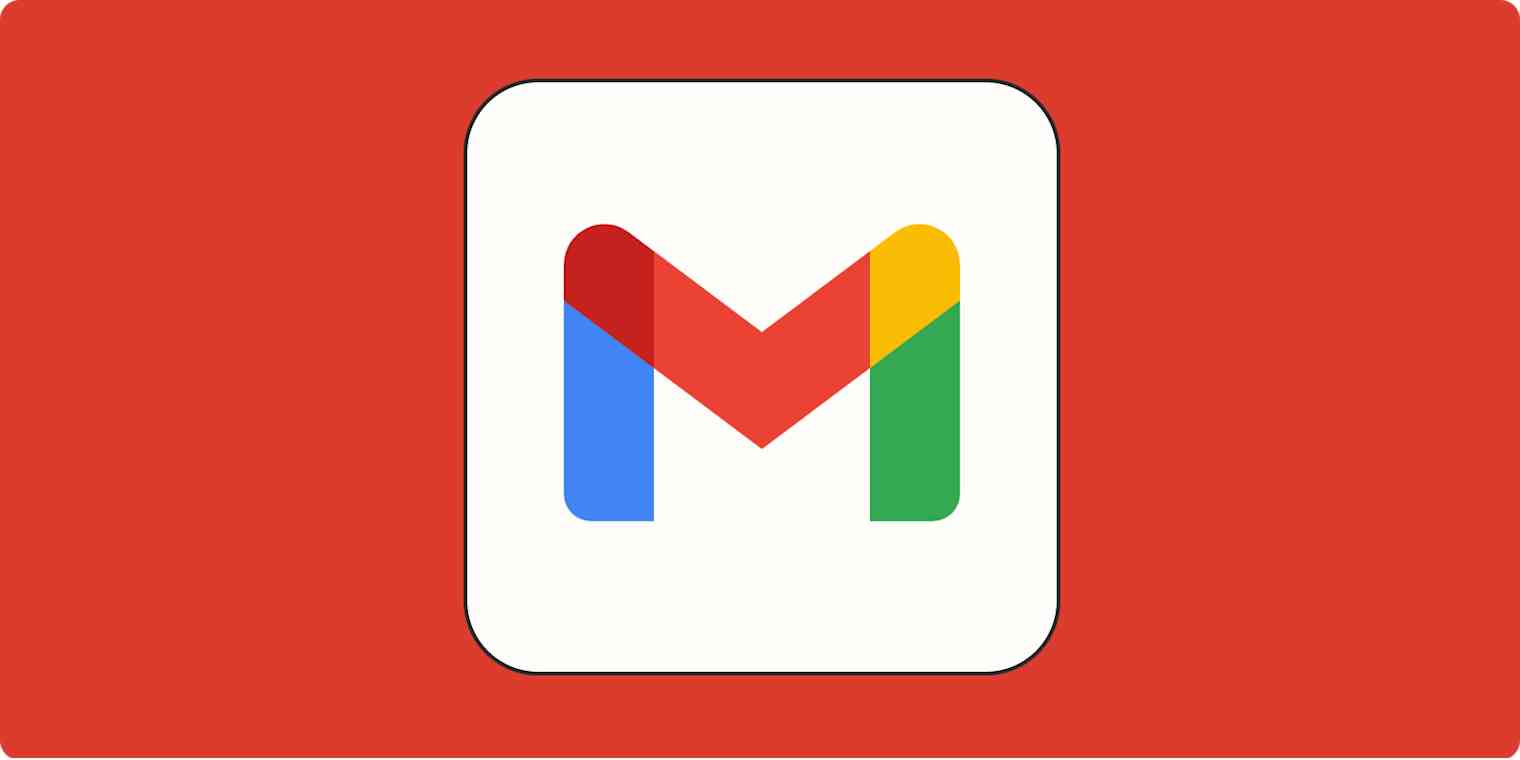No matter how organized you think your Gmail inbox is, there's usually something you can streamline even better. That's what happened to me when I recently discovered how to auto-assign labels to incoming mail.
I now realize this feature has been around for a long time, but I'd never looked into it. But ever since that first email popped into my inbox with a pre-attached label, I've been hooked.
Keep reading to learn all about how to automatically add labels to emails in Gmail—and everything else you might want to know about Gmail labels.
What are Gmail labels?
Gmail labels are tags that help you categorize your email messages. You can apply several labels to a single email. For example, if you wanted to label a message from your coworker about this quarter's team retreat, you could assign both "Team" and "Travel" labels to that one email.
Gmail folders vs. labels
Gmail labels and folders are the same thing. The feature is called "Labels," but they also work like folders, and you can even nest them as you would subfolders on your desktop or cloud storage.
Where do Gmail labels live?
Labels keep things organized, but because they function as folders too, they can also help you find emails later on.
You can choose to display as many labels as you'd like in the left-hand panel of your account, called the "label list."
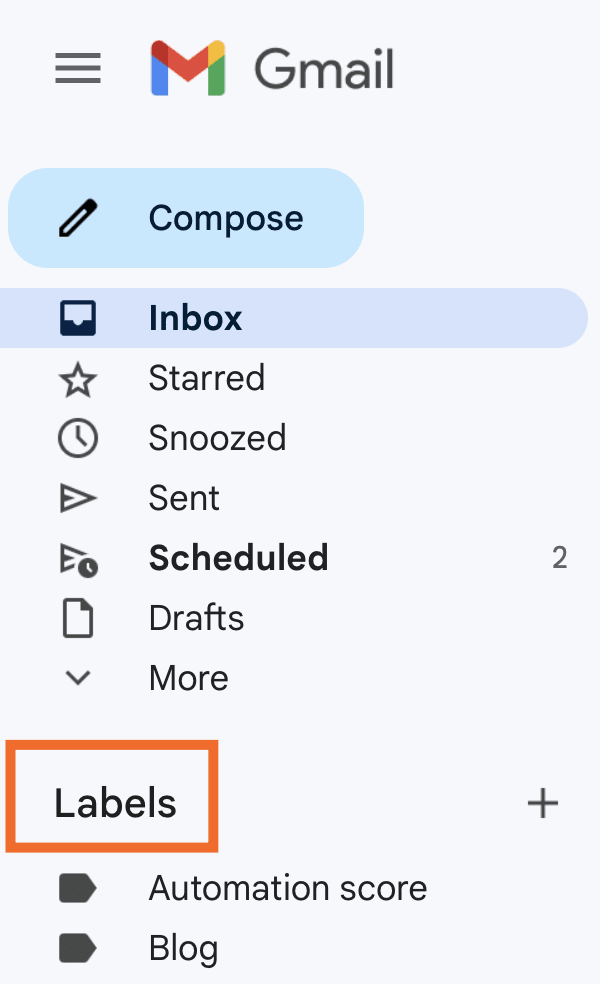
Click any of those labels to see all the emails associated with them.
You can expand or minimize nested labels by clicking the arrow icon next to the parent label.
Hover over any of the labels, click the three dots, and you can do a number of things with your labels: add a color, decide if your label appears in emails in your inbox, and add a sub-label, among other things.
You can choose to show or hide labels in this list, or only show them when there's an unread message. (Any hidden labels can be viewed once you click the More text under your last visible label.)
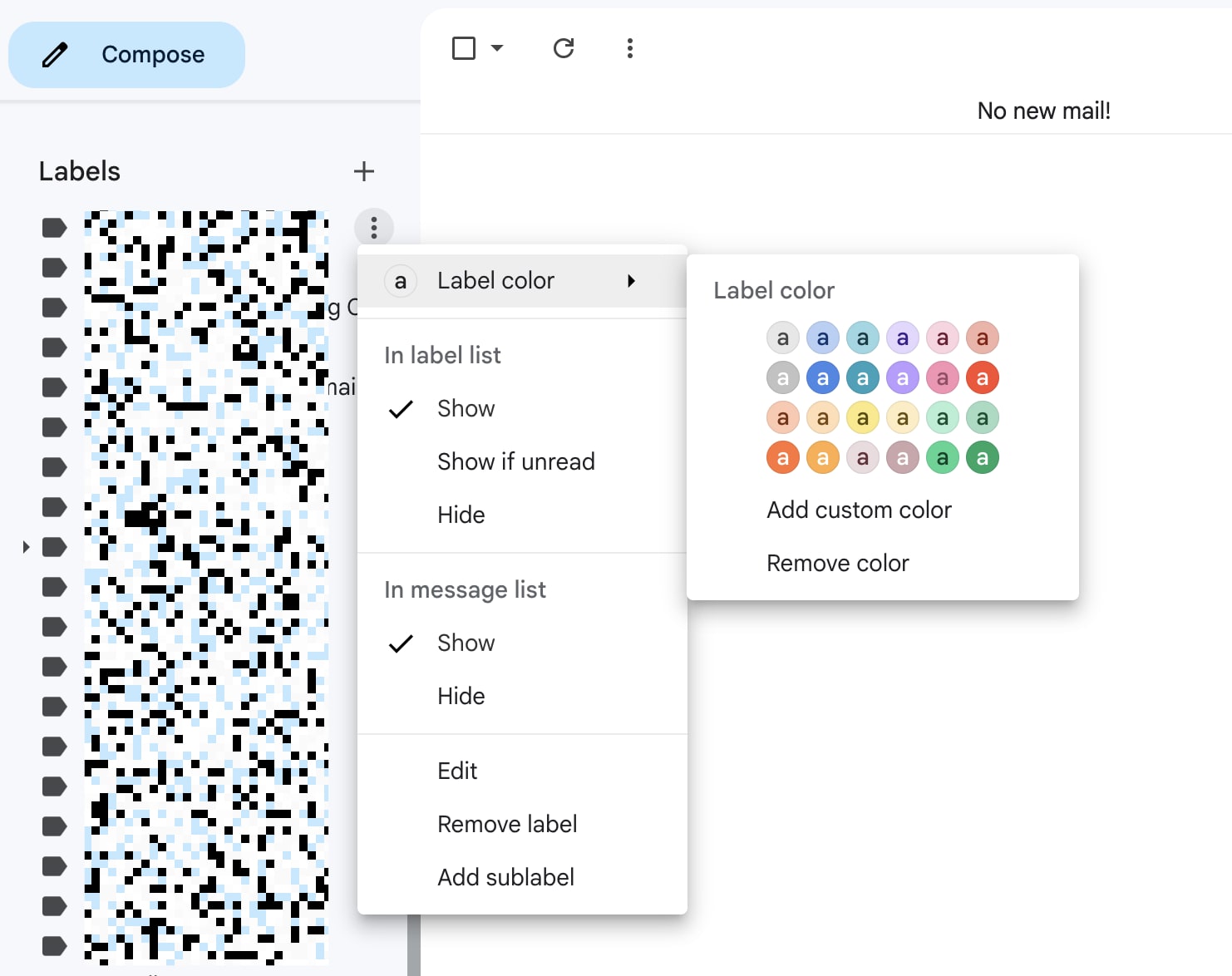
How to create labels in Gmail
Adding new labels to your Gmail account can be done in one of three easy ways from your desktop computer (labels can't be created via the Gmail app at this time).
From the label list
Create a new label directly from the label list by clicking the plus sign (+) to the right of the Labels title. (If you hover over the sign, you'll see alt text that says Create new label.)
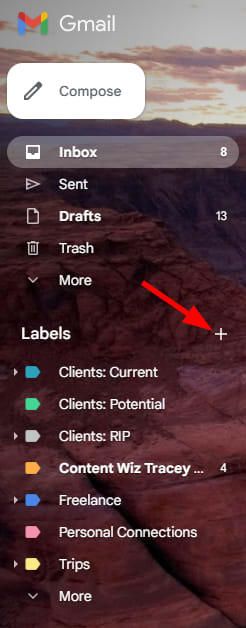
From there, enter your new label name, choose a parent label to nest it under if applicable, and click Create.

From Gmail settings
You can also create a label by going to your Gmail Settings. Click the cog icon on the top-right corner of your screen, and select See all settings.
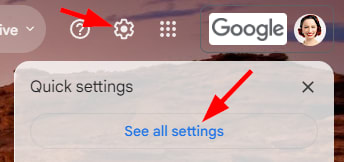
Click the Labels tab.

Scroll down to Labels, and click the Create new label button.

Enter your new label name, choose a parent label if applicable, and click Create.
From an email
Finally, you can add a label by going to any email message you want, opening it up, and in the top bar, clicking the Labels icon.

This will bring up a list of your current labels, as well as a menu at the bottom. In this menu, click Create new.

Like in previous creation methods, add your new label name, choose a parent label if applicable, and click Create.
Note: This last method of label creation will automatically add your new label to the email you created it from. I generally save this method for when I know I'll be receiving lots of emails about the same topic and haven't already created a label for that topic. For example, if I just signed up for a newsletter about content marketing, I would open up the first email and create a new label called "Content marketing" that I could then apply to future emails as well.
How to manually add a label in Gmail
Once you've created some labels in your Gmail account, it's time to add them to relevant messages.
Select any email in your inbox. On the top bar, click the Labels icon.

Scroll through your created labels, and check the one(s) you want to add to that email. Click Apply.
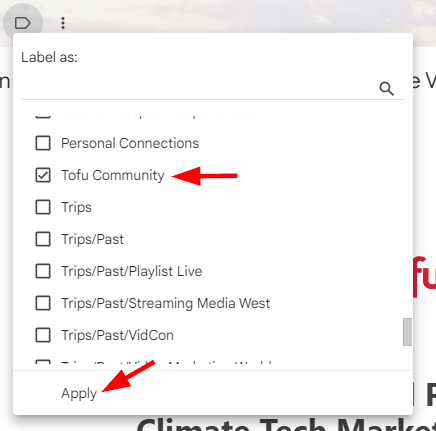
Alternatively, you can search for your preferred labels by entering them into the search bar at the top of the label list, and then checking them off from there.
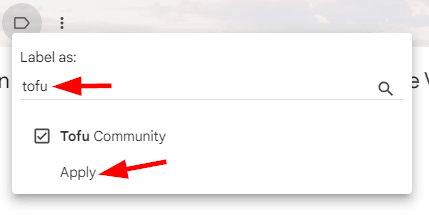
How to manually add labels in Gmail from the mobile app
This process is similar on mobile devices.
Open an email on your phone. In the top-right corner, tap the More icon (three dots stacked vertically on Android, three dots stacked horizontally on iPhone).

Tap Change labels on Android or Label on iPhone.
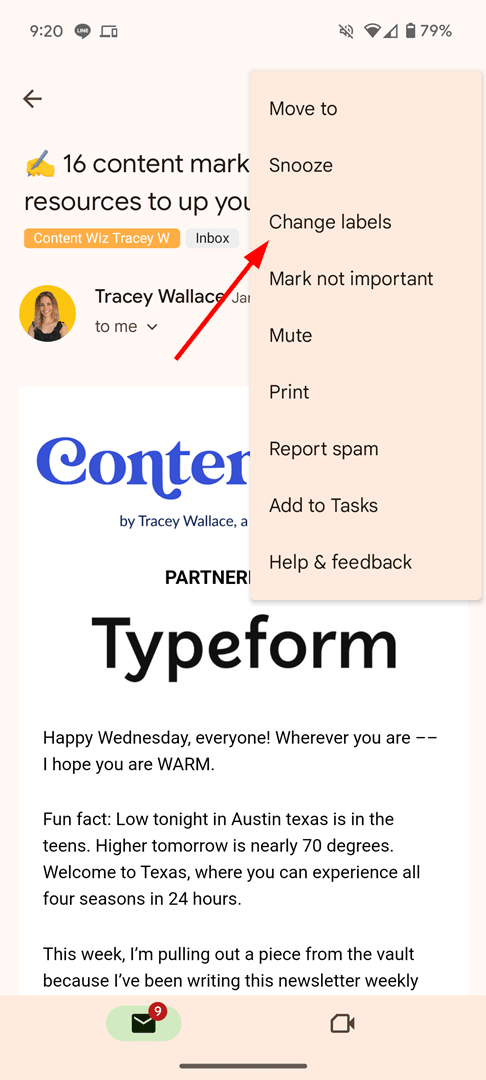
Add or remove labels to that message by checking or unchecking the boxes.
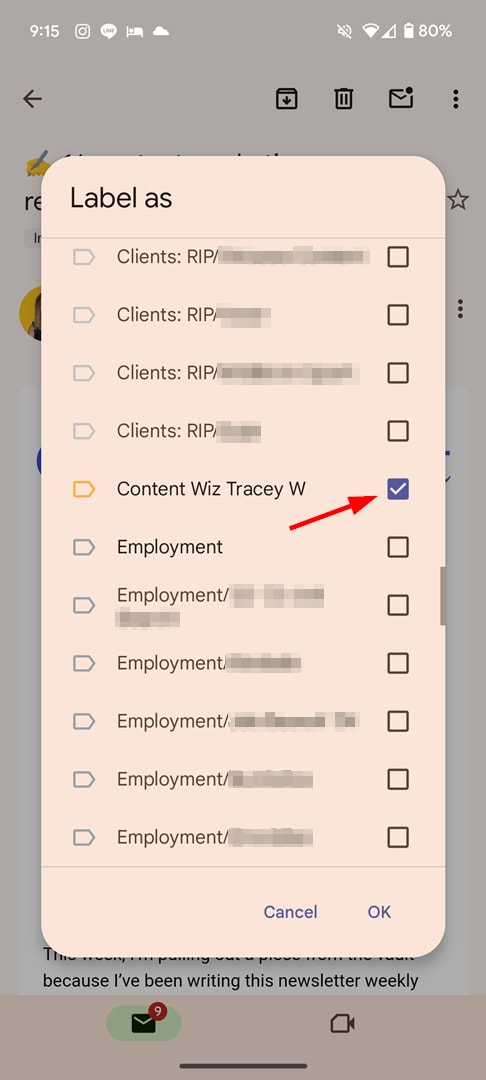
Tap OK on Android or the checkmark on iPhone to save your changes.
How to automatically label emails in Gmail
Now we're on to the meat of this article: the tip that will revolutionize your Gmail organization. Here's how to auto-assign labels to your messages.
Click the Show search options icon in the search box at the top of your Gmail inbox.

Alternatively, you can check the box next to the message you want to auto-assign a label to. Then click the more icon at the top of your inbox (three dots stacked vertically). Select Filter messages like these.
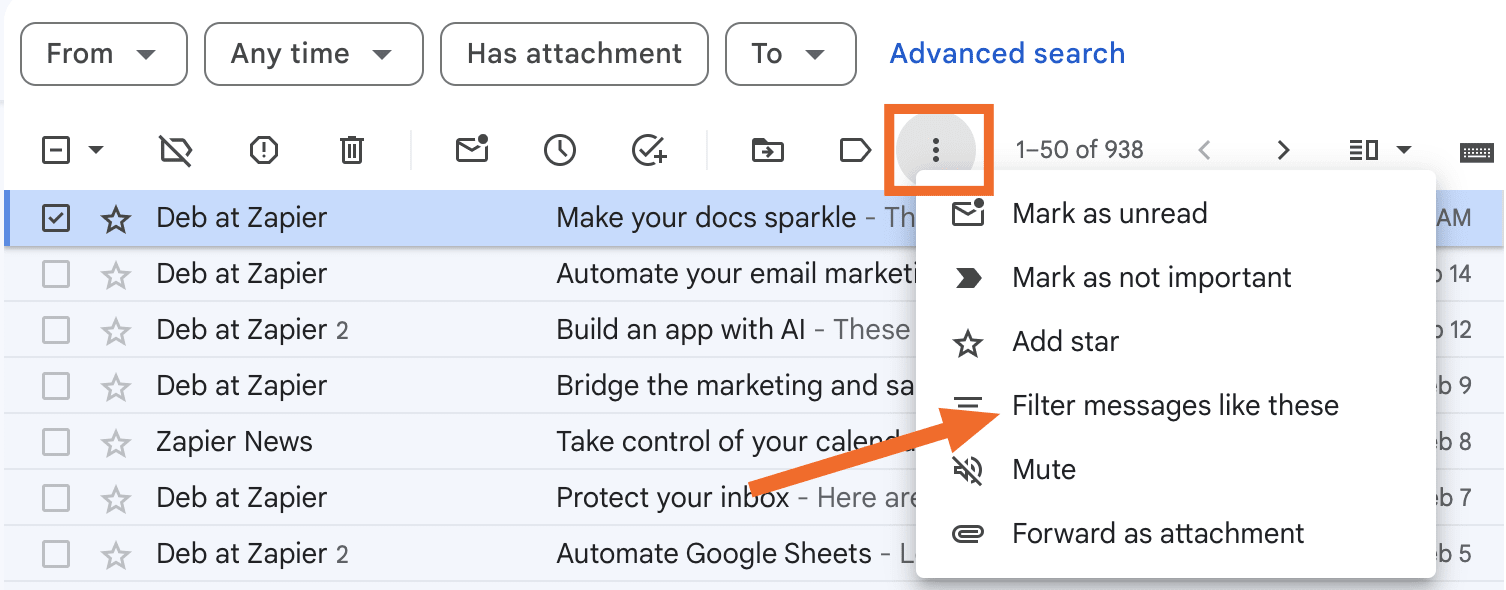
Start typing in the search criteria you'd like to apply your new filter to. (Learn more about how filters work here). On my end, I knew that I wanted all emails from Tracey Wallace, a content marketing expert I follow, to automatically have a label attached to them, so I searched for and added her email address.

You can refine your search using the other filter fields here as well, such as adding keywords to Has the words or Subject.
Click Create filter at the bottom of the window when all your parameters are added.

A new window will appear, and this time you'll check the box for Apply the label. Select or create the label you want to automatically apply to all emails meeting the parameters you entered in the previous step. In my case, I created the label "Content Wiz Tracey W" and selected it.
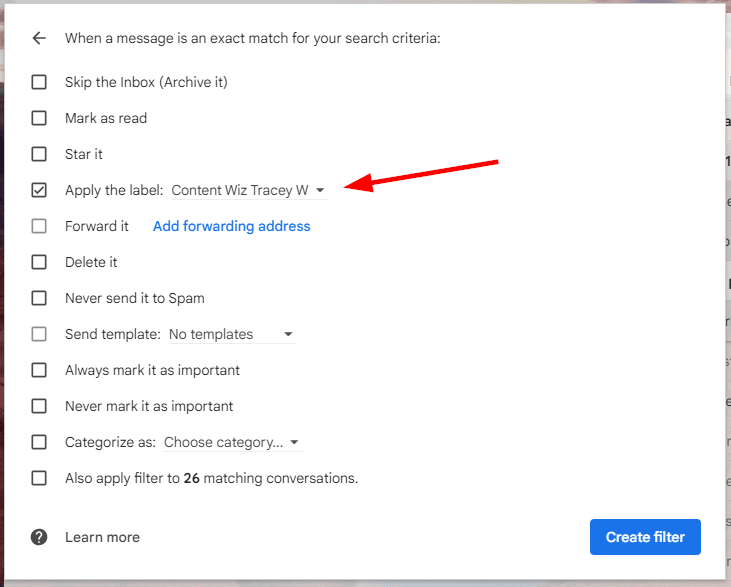
This is where you could also check, for example, Skip the Inbox (Archive it) if you wanted to auto-label an email and send it straight to a folder without it coming through your inbox.
Click Create filter.

Your emails will now automatically have your chosen labels applied to them as soon as they hit your inbox.
There are plenty of reasons you'd want to automatically add labels to emails beyond just sorting messages from one sender. For example, if you want to label all invoicing messages, you could enter "Invoice" into the Subject field as you create a filter. You could also sort emails by keywords in the body copy of emails, such as auto-labeling messages that talk about your team's latest marketing campaign. Get granular with your filters, and before you know it, all your emails will be automatically labeled.
How to delete labels in Gmail
To delete a label in Gmail, you have two options.
First is straight from your inbox:
Hover over the label name in the Labels list, and click the three dots.
Select Remove label.
Confirm in the pop-up that you want to delete the label.
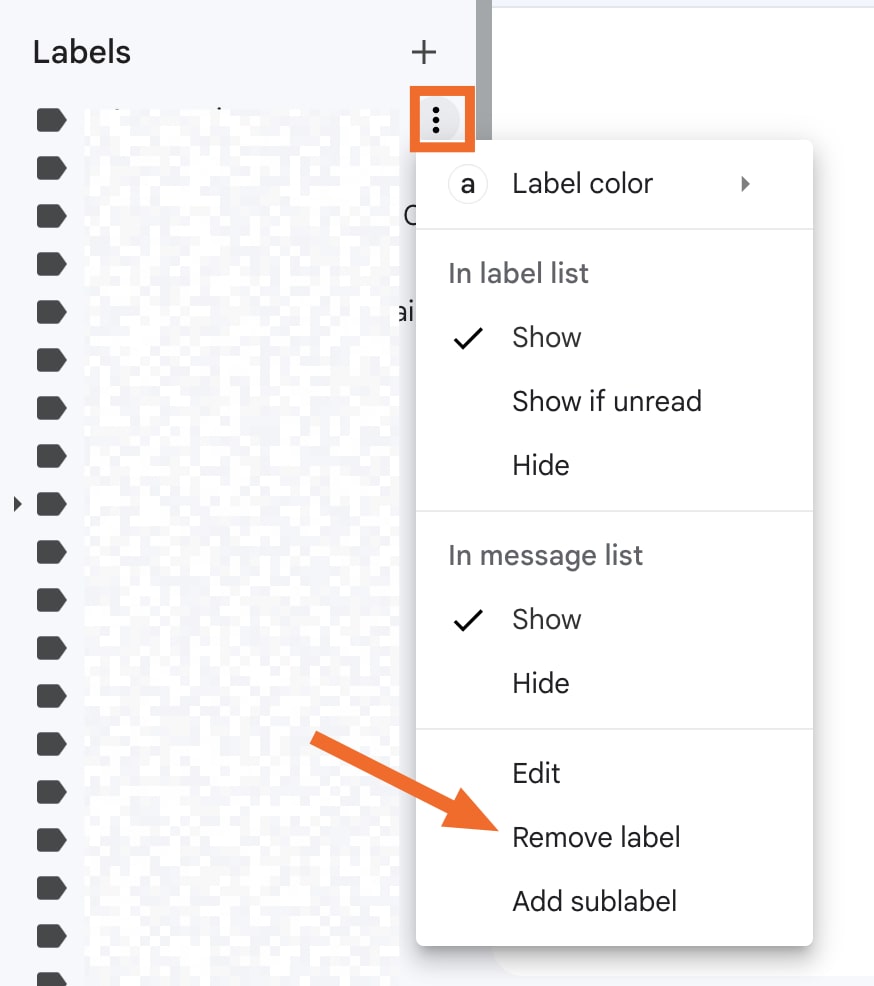
Your other option is to delete labels from your settings:
Go to Settings > See all settings.
Click the Filters and Blocked Addresses tab.
Click delete next to the label you want to delete.
Click OK to confirm.
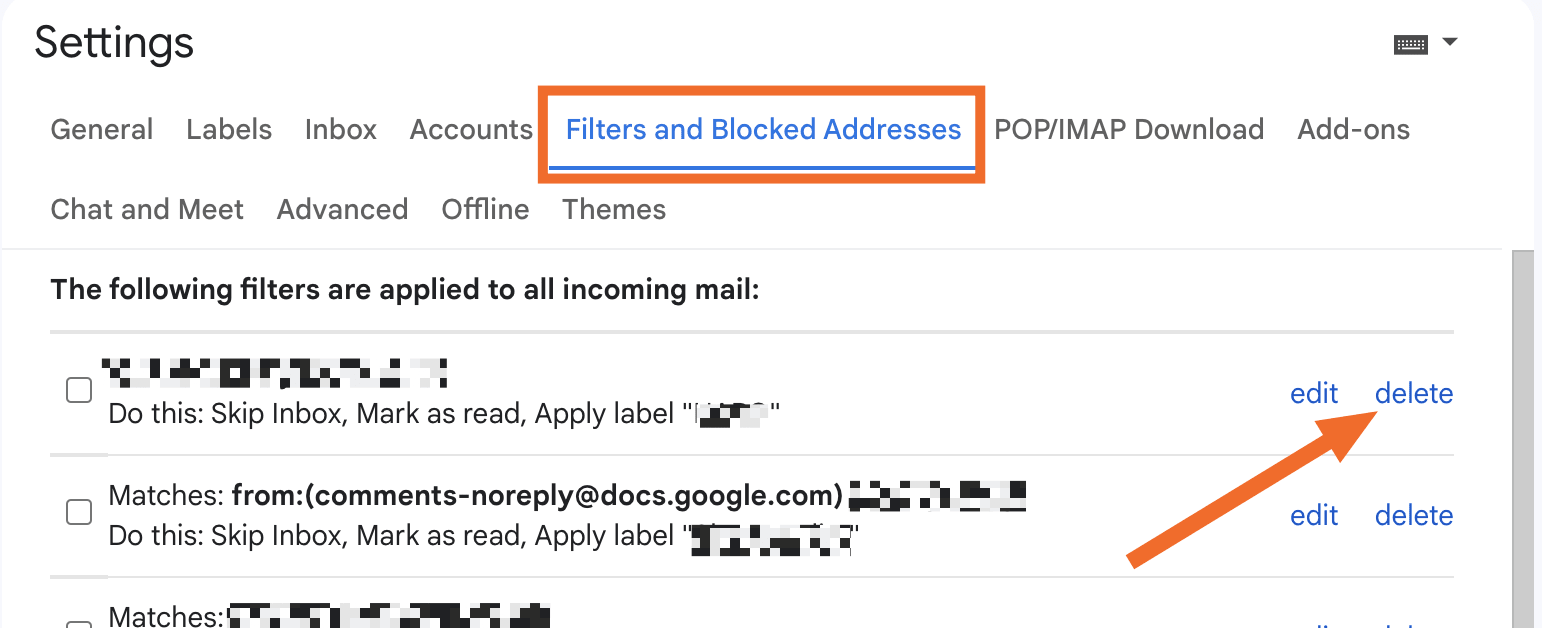
Automate your Gmail even more
Now that you're in the automation game, why not automate your inbox even more? By connecting Gmail to Zapier, you can do things like create a to-do list from your inbox, automatically save email attachments, or even use AI to automatically label your emails. Learn more about how to automate Gmail, or get started with one of these pre-made templates.
Save new Gmail emails matching certain traits to a Google Spreadsheet
Create email copy with OpenAI from new Gmail emails and save as drafts in Gmail
Zapier is a no-code automation tool that lets you connect your apps into automated workflows, so that every person and every business can move forward at growth speed. Learn more about how it works.
Love your Gmail label experience
Once you know the power of auto-assigning labels to help you organize your Gmail inbox, you'll wonder how you ever lived without it. All those messages will start to look empty without a label niftily attached to them the moment they enter your inbox.
Related reading:
